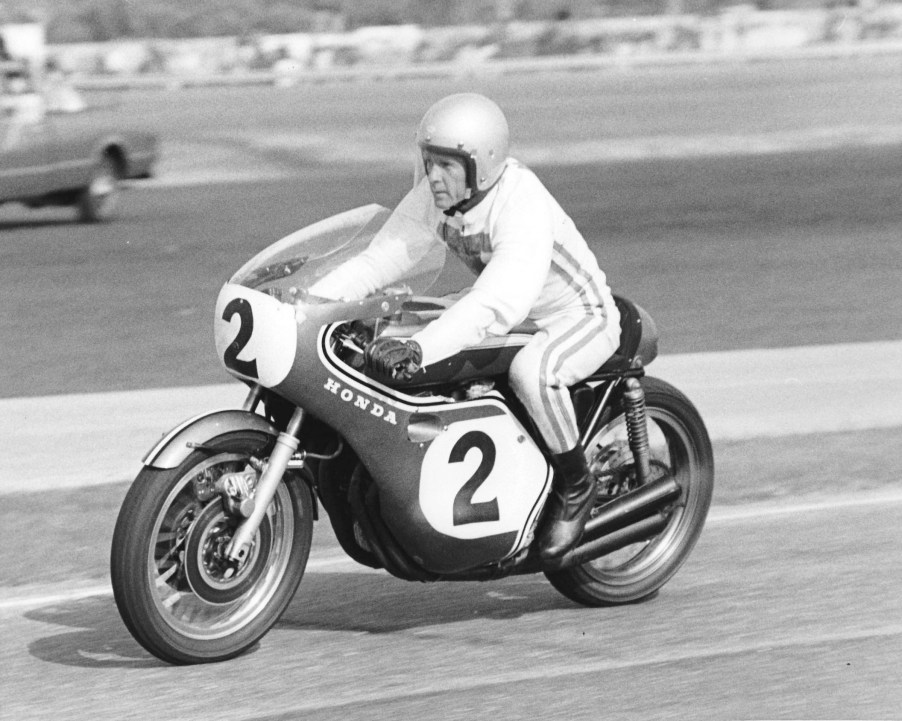
Is the Sand-Cast Honda CB750 Actually Better or Just Collectible?
“Collectible” is a strange and elusive moniker. For as long as manufacturing has existed, collectibility has been present. In the early 1900s, cigarette trading cards were made to stimulate cigarette sales by adding a single card from a set with famous people or places on them, pushing people to collect the whole set. These manufactured collectibles slowly turned into people wanting the rarest and most unique versions of the things they liked. The 1969 Honda CB750 with the sand-cast motor is a perfect example of this.
“Rarer than hen’s teeth”
Collectibility is not a science, though. The rarest and highest quality items don’t always mean the most collectible. As George Gruin always says, “The bubonic plague is rare these days, but you don’t see anyone lining up that.” Also, the best version of something is often going to be the most produced version, making it common.
So, what is it that makes something collectible? The answer is some murky middle ground wrapped in mythological cosmology stories.
Superbike supernova

In 1969 Honda changed the Motorcycle world forever with the introduction of the CB750. Until this bike, Honda only made small motored bikes and scooters, leaving the big-displacement bikes to the English and Americans. Not only did the CB750 work, but it blew the lid off what affordable power looked like in a motorcycle.
The 1969 Honda CB750 was the first superbike. This is a term that is commonplace in the motorcycle industry today, but in 1969 it wasn’t really a thing. The CB750 was the first bike to have an inline-four, disc brakes, and electric start. It’s hard to imagine a modern superbike without these features today. The CB series is a beautiful design across the board, but the CB750 was the king of not only Honda’s lineup but the entire motorcycle marketplace in 1969.
Honda was stepping into brand-new territory with a big, road-going bike. Unsure of its success with a big road bike, Honda started with a cheaper way to cast these new, bigger engine cases.
The life and death of the sand-cast engine cases
According to Hagerty, Honda had projected to sell only 1500 bikes that year. As a result, Honda didn’t want to over-invest in this risky launch, so they used the cheaper engine casing manufacturing process called sand casting.
The Honda CB750 was such a smash hit that not only did Honda’s production surpassed the inaugural 1500 sand-cast bikes in the first year, but they began producing 1500 CB750s a month. With production numbers ramping up, Honda decided to invest in die-cast molds ending the short-lived sand-cast cases, according to Hagerty.
Of the 445,000 first-generation CB750s, only 7,414 were produced using the original casting method. Although that’s a small percentage, the overall number isn’t crazy small. Nearly 7,500 units hardly count as “hen’s teeth.” If there is still a decent amount of these left, it would seem that there are enough to go around, right?
Cb750 owners have never made a connection to these bikes being superior to other first-generation Honda CB750. Honda simply made them this way not because they are better, but simply because they were cheaper to make that way.
Although the earliest version of the CB750 isn’t insanely rare or mechanically superior, or different looking at all, they are still significant. The CB750 paved the way for so many of the bikes we now love. Modern motorcycle racing owes a debt of gratitude to the CB750 as well. It is an icon. Few bikes have impacted the motorcycle industry the way the 1969 Honda CB750 has.
Honda CB750 is a legend, and the first version is treated as such
Understanding the CB750s legendary status firmly cemented, the very first version of it doesn’t have to be better or prettier or even that rare to perk up a collector’s ears. Hagerty shows examples of the sand-cast bikes going for three-four times the average price of other first-generation bikes.

So, is it worth it? Well, if you want to own a significant piece of motorcycle history, then yes, it is. But, if you just want a rad, fast, and reliable vintage bike, then just buy any early 70s CB750 and let it rip. Leave the collector bikes to the folks with polished garage floors.



